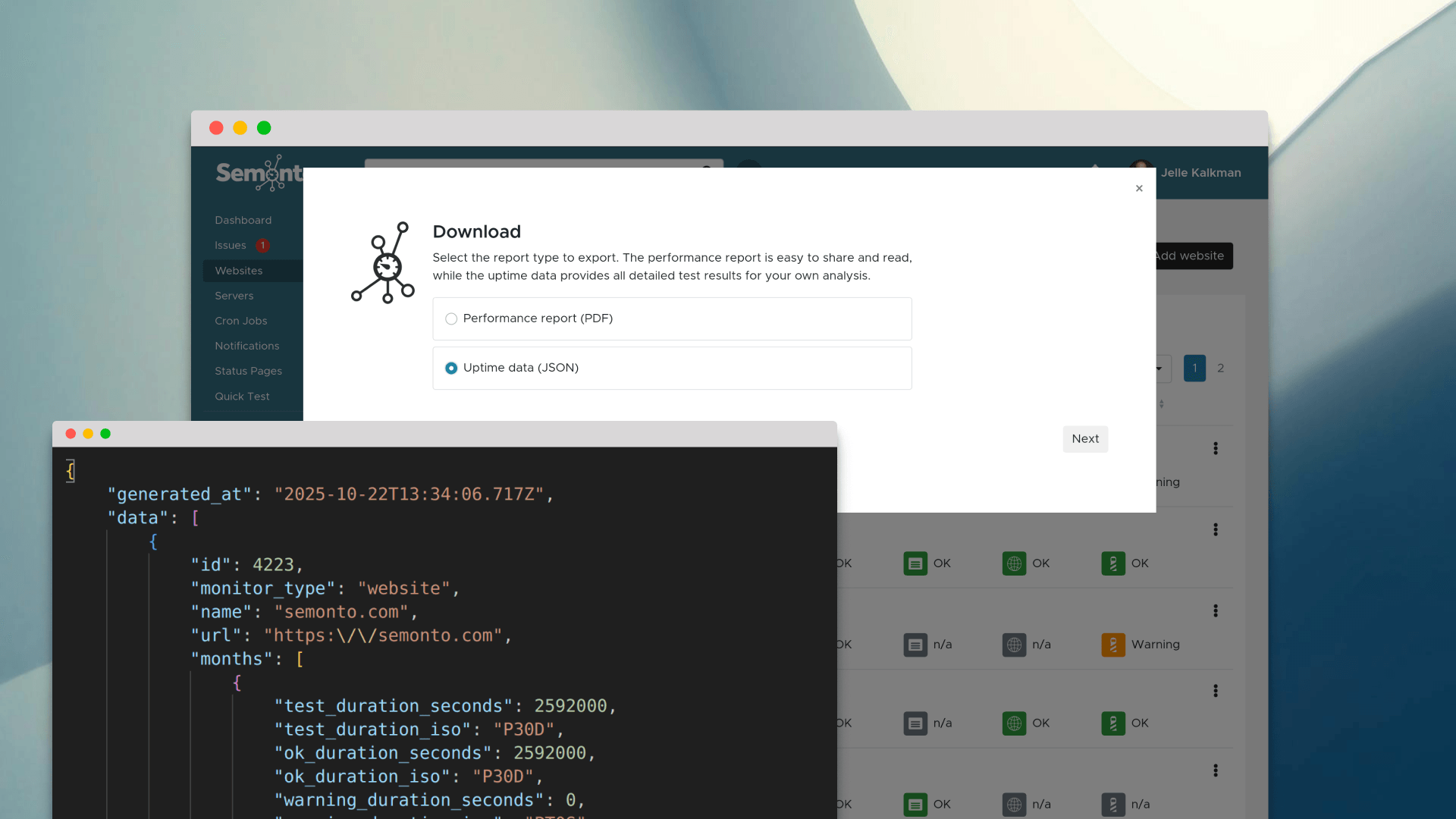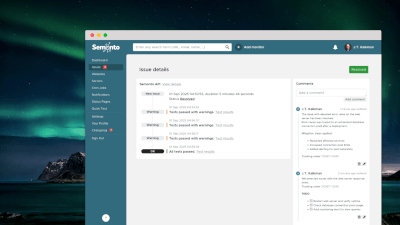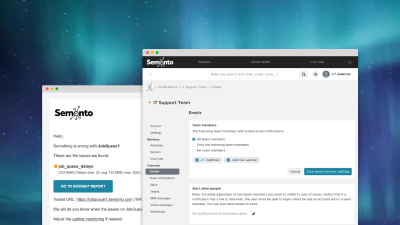Your uptime percentage indicates how long your website was available without any interruption. In this article, we explain where you can find your uptime percentage, how should you interpret it, and - more importantly- why you should care.
What does uptime mean?
Uptime is the official term for the time your website was up and running without interruption. It is the exact opposite of 'downtime', which is the time your website was not working or loading as expected.
How is my uptime calculated?
People usually express uptime as a monthly percentage. So if you have a monthly uptime percentage of 99.8%, that means that your website was online 99.8% of the time. That may seem reasonable until you realize that 99.8% uptime means that your website was offline for 1.5 hours that month.
How should I interpret my uptime?
If you want to know how your uptime percentage translates into lost hours or minutes, this table can be useful.
| Availability % | Downtime per year | Downtime per month | Downtime per day |
|---|---|---|---|
| 90% ("one nine") | 36.53 days | 73.05 hours | 2.40 hours |
| 95% ("one and a half nines") | 18.26 days | 36.53 hours | 1.20 hours |
| 97% | 10.96 days | 21.92 hours | 43.20 minutes |
| 98% | 7.31 days | 14.61 hours | 28.80 minutes |
| 99% ("two nines") | 3.65 days | 7.31 hours | 14.40 minutes |
| 99.5% ("two and a half nines") | 1.83 days | 3.65 hours | 7.20 minutes |
| 99.8% | 17.53 hours | 87.66 minutes | 2.88 minutes |
| 99.9% ("three nines") | 8.77 hours | 43.83 minutes | 1.44 minutes |
| 99.95% ("three and a half nines") | 4.38 hours | 21.92 minutes | 43.20 seconds |
| 99.99% ("four nines") | 52.60 minutes | 4.38 minutes | 8.64 seconds |
| 99.995% ("four and a half nines") | 26.30 minutes | 2.19 minutes | 4.32 seconds |
| 99.999% ("five nines") | 5.26 minutes | 26.30 seconds | 864.00 milliseconds |
Why does uptime matter?
As a business owner, you cannot afford to neglect your uptime. Your online presence is becoming increasingly important, and every minute of downtime can have a severe impact.
For your SEO ranking
Imagine that your website is offline when a search engine like Google or Bing is trying to index it. If that happens frequently, the search engine will drop you in its ranking because it assumes that your website is not reliable. Search engines want to offer their users the best possible experience, and that includes ensuring that the top results are not only relevant websites but also websites that are always available. So even if you have optimized your website for SEO and are using all the right keywords, you can still end up with a lousy ranking because of availability issues. And if you rank low in the search engine results, fewer people will be able to find you.
For your revenue
If a customer clicks a button and the result does not appear fast enough, you have lost a sale. And what if your website is offline when someone visits it for the first time? Most likely they will go straight to the competition, never to come back.
For your reputation
Your website is an essential part of your online reputation. The more errors or difficulties your visitors encounter, the less professional you look. If you cannot keep your website under control, why should they trust that you can process their order professionally?
Where can I find my website’s uptime?
By now you are probably wondering about your own uptime. The only way to know your uptime percentage is to monitor your website for a month and see whether it goes offline. And that is precisely what our monitoring tool Semonto does. But it does more than that. Semonto also alerts you immediately when your website is having problems so that you can quickly resolve the issue before your business is affected.
What can I do if my uptime is bad?
Your website is running on a server. The company that is managing that server is called a hosting firm. The person who built your website may also be your hoster, but sometimes your website is being hosted by a third party. In any case, your web developer can usually tell you who your hosting partner is. Via the monthly uptime reports, you can easily review your average uptime of the last months and check if your web hosting company is delivering what is promised. Not all web hosting companies are sharing their performance openly. With the objective uptime report Semonto gives you, you can make your own conclusions based on trusted data.
How to read Semonto’s uptime report
The uptime percentage: How reliable is my hosting?
The monthly uptime percentage indicates the global availability of your website. A percentage of 99.85% means that your website was offline for 1 hour and 5 minutes in total. This percentage can be useful to follow up on any service level agreement (SLA) you have with your hosting company. In Semonto, you find your uptime percentage by clicking “Reachability” and selecting the URL you are interested in. When you click “Uptime Report”, the calendar view shows you the uptime percentage at the top of each month.
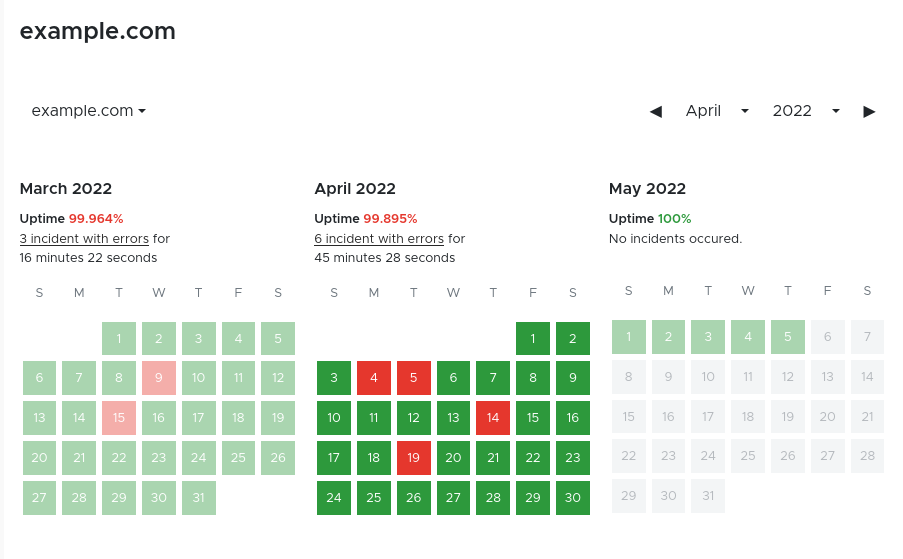
The calendar overview: On which days did issues occur?
The calendar overview shows you the exact dates on which your website had issues and for how long. Green means that there were no incidents, orange indicates a warning and red means that something went wrong on that day. When you click on a day in the calendar, you get a summary of the performance for that day.
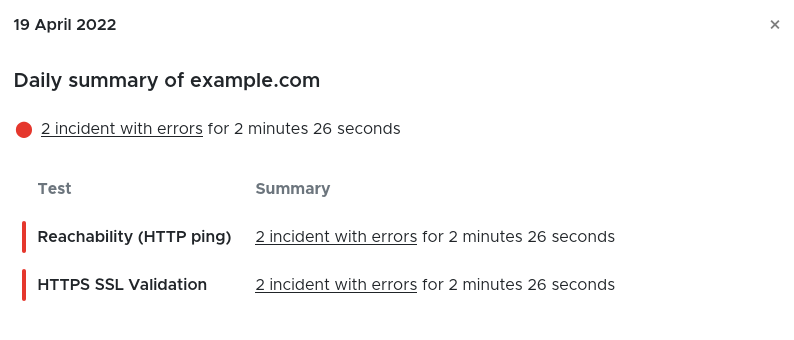
Test result details: What happened?
If an incident occurred, a clickable link will take you to a detailed incident report. This overview shows you when an incident started, when it was resolved, the duration of the incident and which tests failed.
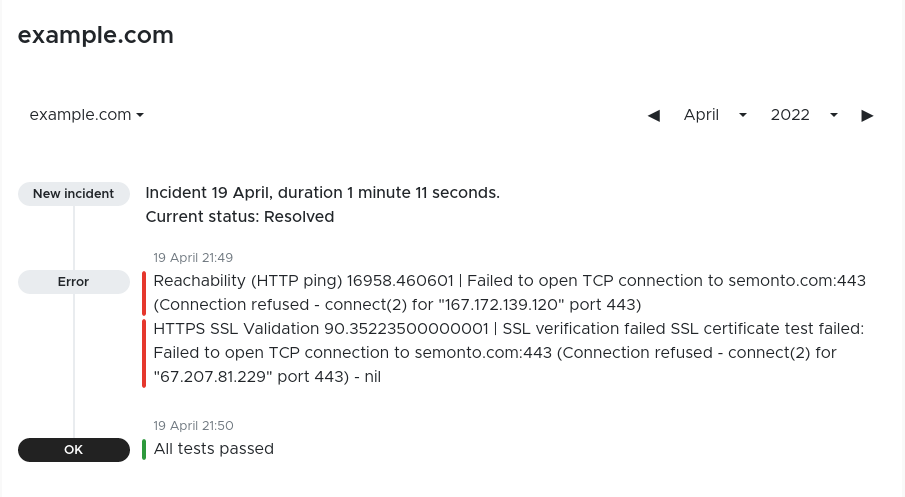
You can change the testing frequency
The testing frequency is something you can decide for each monitor. You can check your website or server every fifteen minutes, every five minutes, every minute: whatever suits your specific situation. The more frequently you test, the more detailed the results. To change the testing interval, select “Reachability”, click on a URL and select “Configure reachability tests”.
Monthly updates by e-mail
The uptime report and its history are always available in Semonto. You also receive a monthly email containing an overview of the last month as well as the detected incidents. If you have added team members to your account, they will all receive this report too, so everyone is aware of the last uptime results.
How to get started
Uptime reports are available in all plans of Semonto as they are a critical aspect of reviewing the performances and availability of your website. If you don’t have an account yet, you can create a free trial to generate your first uptime reports. If you have feedback about Semonto, get in touch! We love to hear from you.


